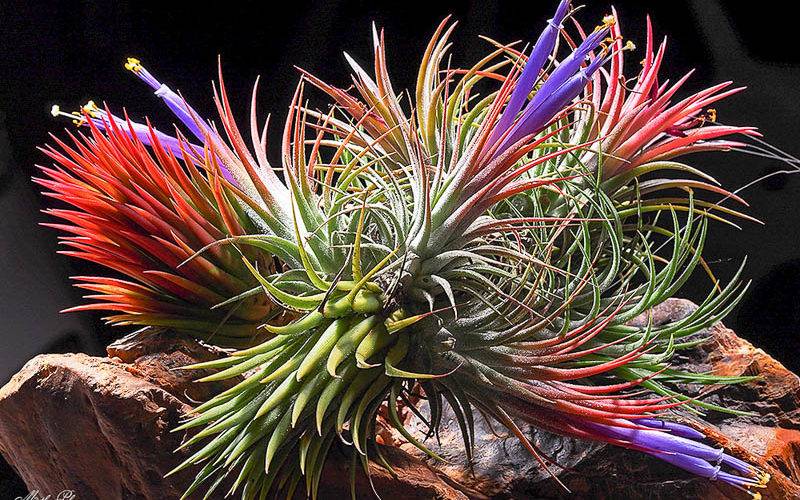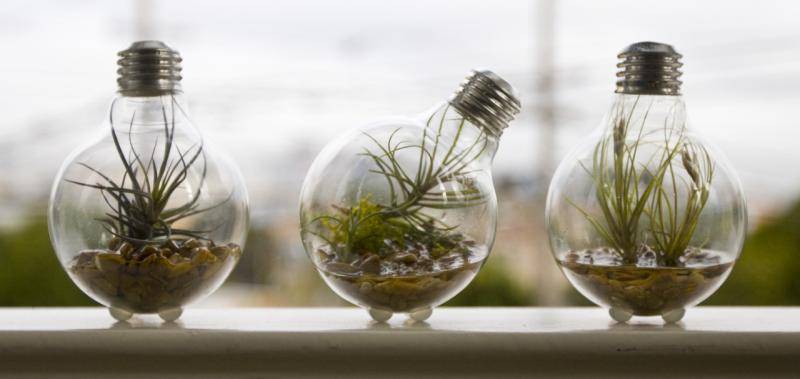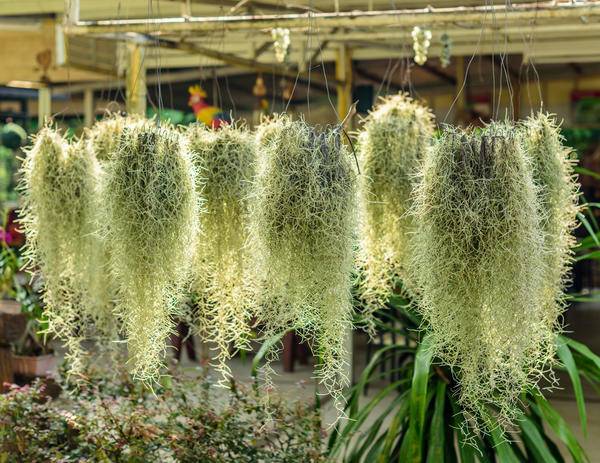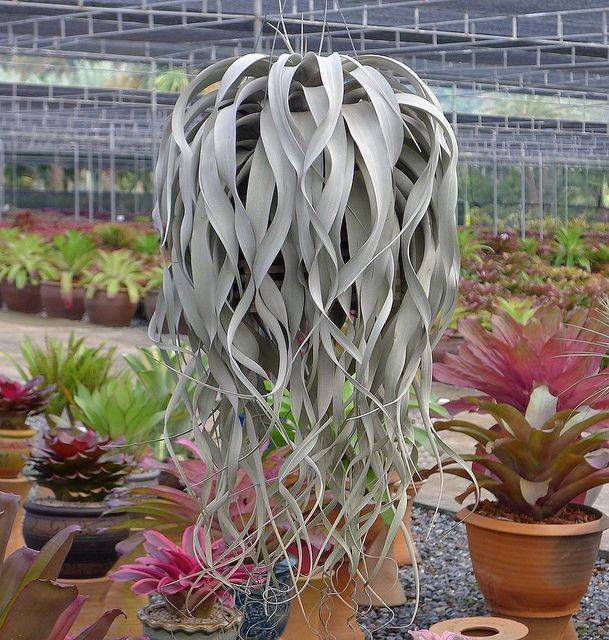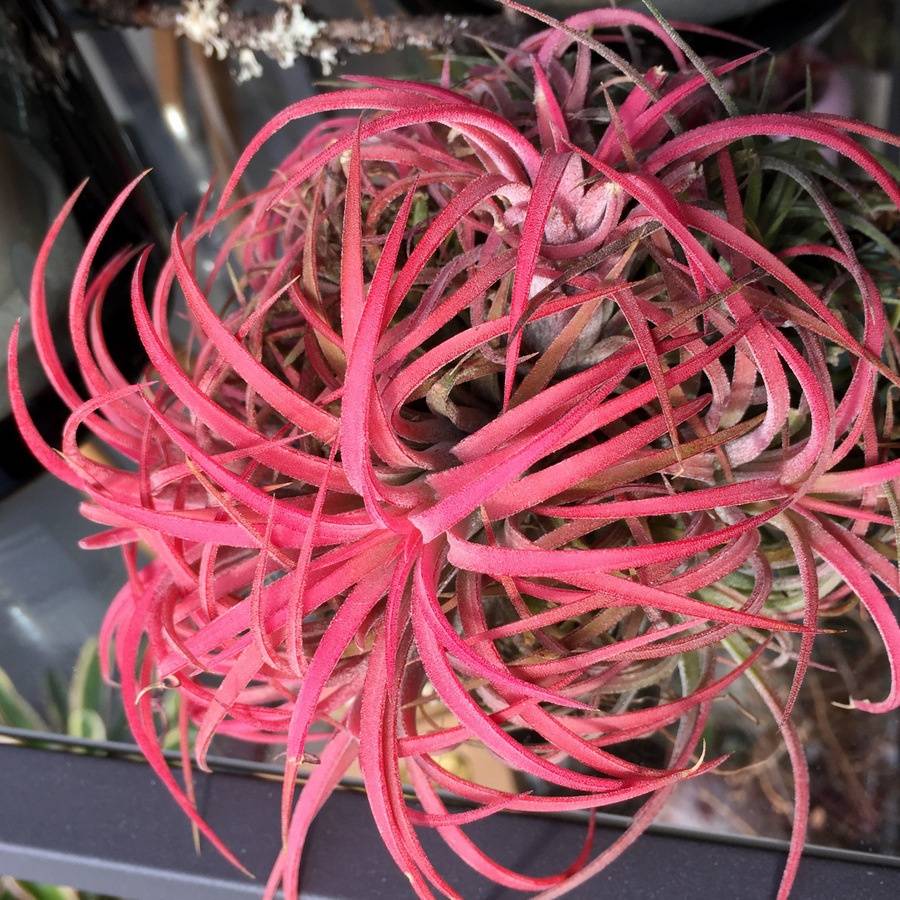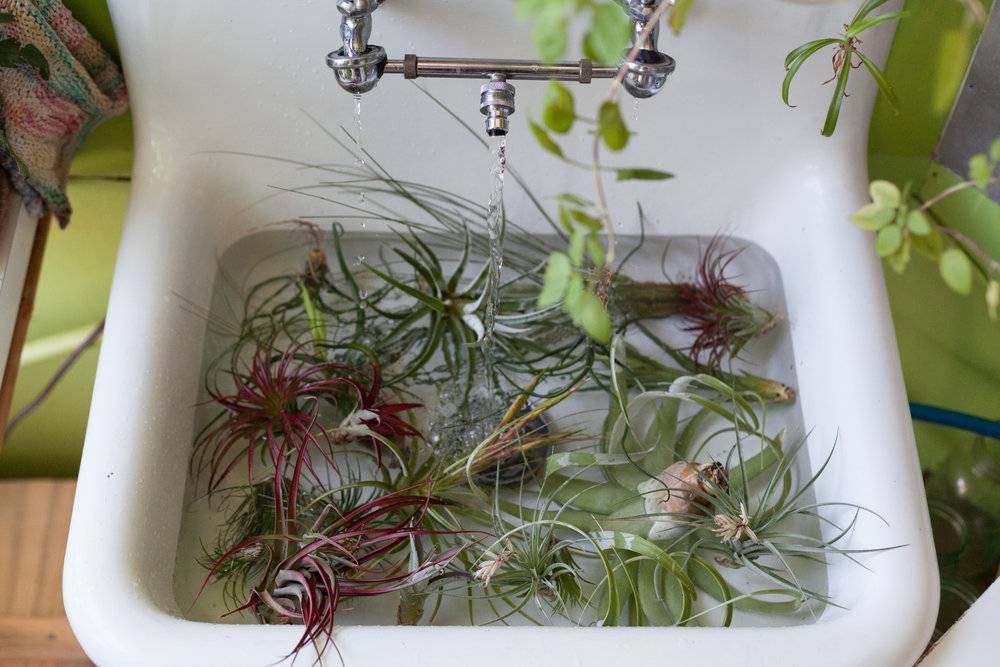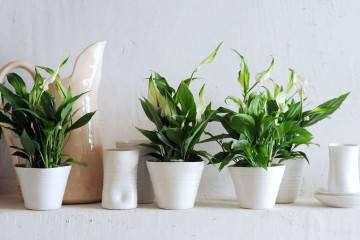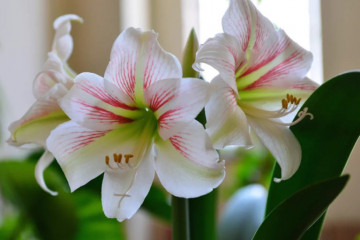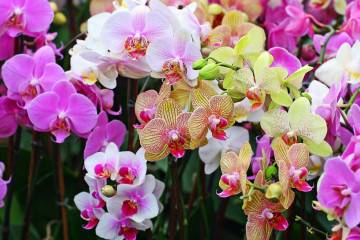Tillandsia - home care after purchase, flowering and transplanting
Content:
The tillandsia plant is unusual, very popular among flower growers, loved by them for its non-trivial appearance. Tillandsia captivates at first glance not only with its various forms, but also with the variegated colors of blossoming buds.
Description of the plant
Taking care of a flower is easy. It is slow-growing and therefore does not need regular feeding. The only thing that may seem strange to novice florists is the peculiarities of its watering.
The origin and appearance of the plant
The homeland of the flower is the subtropics, Central and South America. It belongs to the Bromeliad family. It is an epiphyte that needs moss, bark, driftwood or soil with strong friability.
It is problematic to describe the appearance of tillandsia, because the shape and shades of the buds depend on the varieties, of which the flower has a lot.
Plant flower description
There are 2 types of flowers - atmospheric (gray) and green (potted).
- Atmospheric lacks a root system. The subspecies got its name because the flower takes nutrients from the air. Touching the leaves with your hand, you can feel how hard they are, covered with dense rows of scales. In the wild, it grows on trees located in the upper tier.
- Green in their appearance is as similar as possible to ordinary house flowers in pots. Densely green leaves form a dense rosette. Natural habitat - lower tier, shaded areas. Inflorescences are spike-shaped, very bright shades.
Inflorescences can be simple or complex.
Popular species and varieties
Among the Tillandsia variety, only a few are the most successful varieties.
Home care for Tillandsia Anita
The most famous flower variety. The leaves are narrow, sharp and knocked into a rosette. Tillandsia Anita is a blue-colored flower surrounded by lilac and pink bracts.
Tillandsia Anita care at home is not difficult. Required temperatures from 17 ° C to 26 ° C, regular watering, always wet soil. Only soft water is suitable with the addition of vinegar or citric acid.
Tillandsia usneiform
Stream threadlike, they hang in a cascade. Shoot length up to 1 m. It blooms in spring and summer. The inflorescences are unremarkable, painted in faded shades of blue or yellow.
Tillandsia usneiform needs regular abundant watering and high humidity. The composition of the soil does not matter.The temperature is needed from 18 ° C to 21 ° C.
Tillandsia atmospheric care
The flower is unique in that it does not need soil. It is attached to bark or stones. Caring for atmospheric tillandsia is easy and simple. She needs diffused lighting, temperature from 14 ° C to 18 ° C, humidity from 60%. Regular spraying with soft water is required.
Instead of watering, it is recommended to completely immerse the flower for a few minutes in water or spray it often and abundantly. Fertilizer is applied no more than 1 time per month.
Tillandsia blue
The length of the leaves is up to 30 cm, at the base they are brown in color, green on top. Blooms in summer. The ear is dense, its shape is elliptical. The bracts are pink or purple, the flowers are blue.
Tillandsia blue needs regular spraying, top dressing once a month, humidity not lower than 60%, temperature from 18 ° C to 22 ° C, watering no more than once a week in summer, once every 2 weeks.
Tillandsia Xerography
The flower has hard leaves like a succulent. With sufficient humidity, they straighten, during periods of drought they twist.
Watering is required daily in summer, in winter no more than 2 times a week. In natural conditions, it lives in the desert. Feels comfortable at moderate temperatures. Top dressing should be applied in the summer once a week; fertilizer must be added to the water for irrigation.
Tillandsia Medusa Head
The variety is distinguished by its hardiness. The shape is unusual, like a bulb, the leaves, tightly pressed at the base, bend to the sides only at the top of the rosette. Inflorescences are finger-shaped, red. The petals are purple.
Watering is needed rarely, tillandsia Medusa's head is resistant to droughts, the air humidity is high, the lighting is plentiful, feeding 1-2 times a month.
Tillandsia Cotton Candy
Flower height up to 12 cm, rosette up to 17 cm in diameter.
Watering is required in a minimum amount, spraying is required every other day.
Lighting should be plentiful, continuous, direct sunlight is allowed. In winter, you need to illuminate with a phytolamp.
The temperature needs to be moderate, from 18 ° C to 22 ° C.
Tillandsia Samantha
Sharp leaves up to 40 cm long, red inflorescences up to 15 cm.
Watering is necessary plentiful during the growing season; in winter, you can water less often. The flower loves well-lit places. The required temperature is from 10 ° C to 15 ° C.
Tillandsia Ionanta
The arrangement of the leaves resembles a pineapple top. Leaves adjoin closely at the base. Flowers are purple-red.
Watering is required daily. Loves room temperature and high humidity.
The lighting should be abundant, but without direct rays, from which the leaves will begin to dry.
Top dressing is applied once a month with complex fertilizers with a predominance of potassium.
Tillandsia violet-flowered
The peculiarity of the flower is the ability to grow on any surface. Silvery leaves are collected in small neat rosettes. In summer they turn red. Spike-shaped inflorescences are large, violet-blue.
The violet-flowered variety needs watering no more than 2 times a week, loves a lot of light, high humidity. Top dressing is applied no more than 1 time per month.
Tillandsia Bulboza
The appearance is unusual - the leaves are thin, long, twisting into intricate curls.The inflorescences are colored red, lavender and cherry. The variety is completely unpretentious. It is recommended to plant on stones or driftwood, stands made of artificial materials. Lighting, watering frequency and soil composition do not matter.
Planting and transplanting
A transplant is needed only after buying a flower in a store. The soil is replaced with a more nutritious soil. No need to water for a week after transplanting.
What is needed for landing
Atmospheric flowers don't need earth. They need to pick up a container, glass or plastic, in which several holes are made to drain the water.
Choosing the best soil
Only potting tillandsia needs soil. It is best to purchase a substrate designed for growing orchids.
Step by step process
A transplant is carried out if the tillandsia does not bloom for a long time or is overgrown. Step-by-step actions:
- Remove carefully from the old pot without damaging the root system.
- Save the old clod of earth so that the flower adapts faster in a new place.
- Place in a new container, filling its volume with earth, tamp it slightly.
- Water abundantly.
During the week, you need to spray the flower from a spray bottle every other day.
Reproduction
Reproduction is carried out by seed or by shoots.
Reproduction by shoots
The easiest way:
- Separate from the stem of the babies that appear at the end of flowering.
- Transplant into a pot of nutrient soil.
- Water regularly.
Growing from seeds
Place seeds in a box with nutrient soil, do not deepen much. Sprinkle with earth on top, water abundantly, cover with foil or glass to create a greenhouse effect. Place in a warm room. Every day, the soil needs to be aired for 20-30 minutes. The first gatherings will appear in about a month.
Tillandsia: home care
Flower care depends on its variety.
Watering mode
Watering is carried out depending on the variety. Green tillandsias should be watered and sprayed regularly. Do not allow the soil to dry out.
Top dressing
Fertilizers are needed no more than 1-2 times a month, depending on the variety. You can not use fertilizers with boron and copper in the composition.
Features of care during flowering
During this period, regular spraying with soft water and fertilization are important to obtain brighter colors.
Features of care during the rest period
Tillandsia during the dormant period has the usual care - watering, spraying and feeding are important. You can lower the temperature slightly to stimulate the appearance of flowers.
Such an unusual flower as tillandsia will adorn any, even the simplest interior, serving as a bright accent. As a bonus to the beauty and uniqueness, the growing conditions are quite simple.
